Fungi facts – from freaky to fabulous
You might think you know fungi, but there is so much to discover about the delightful and deadly world of this special group of diverse organisms.
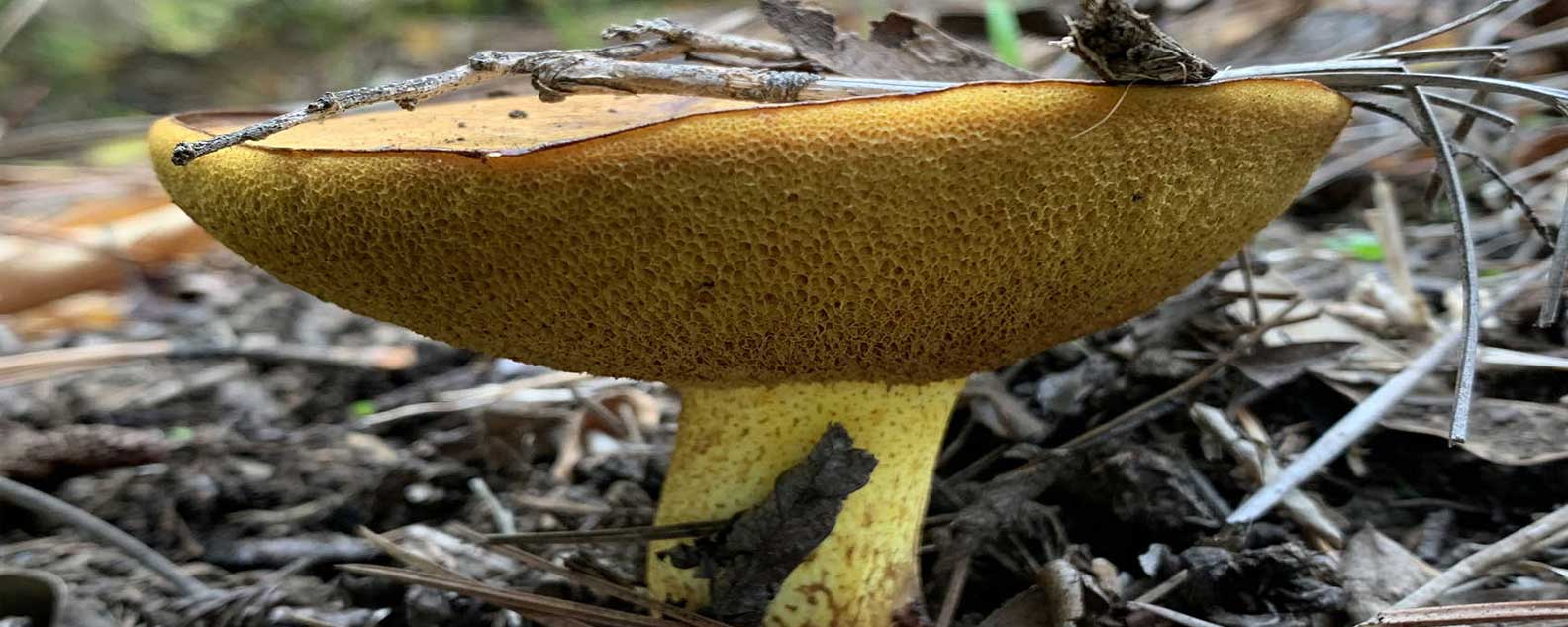
More than just mushrooms
When people hear the term fungi, they usually think of mushrooms. Indeed, the word fungus is a Latin word meaning mushroom. However, most fungal species are microscopic and include the moulds, rusts, yeasts and mildews.
There are also a range of different fungi species that live in a close beneficial relationship with an alga to create the combined “organism” known as a lichen. There are tens of thousands of species of lichen that are found even in the most hostile environments on Earth such as deserts and Antarctica. Another key trait of fungi is that they aren’t mobile, except for their spores which are mostly dispersed in the air. Fungi are also known for absorbing their food from the environment by breaking down pretty much all forms of organic matter – alive or dead. Fungi are possibly the second most diverse group of organisms after the insects. There are estimates that the number of species of fungi is somewhere between 1.5 and 5 million, but there are only around 120,000 species that have been formally described by scientists (mycologists). The vast majority are still to be discovered and described so it is likely that huge numbers will go extinct before we can find them all.
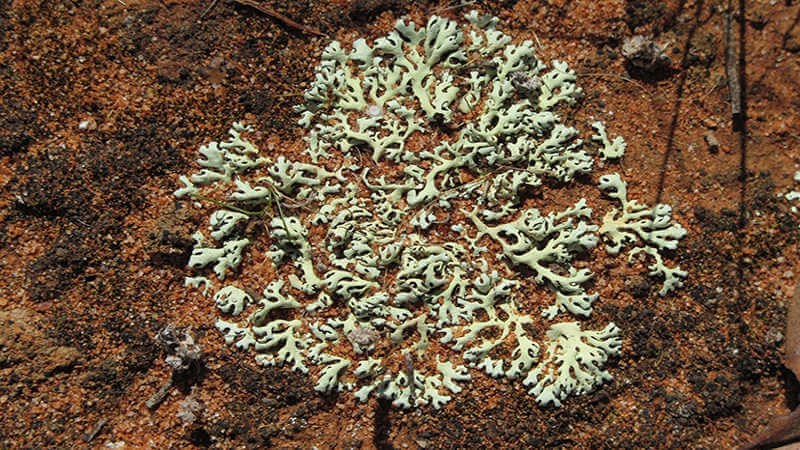
Unknown lichen species growing at Mungo National Park
Are fungi plants or animals?
Neither. Fungi are in a kingdom of their own and are separate from the plant and animal kingdoms. However, DNA analysis has shown that fungi are much more closely related to animals than they are to plants. The cell chemistry of fungi is much closer to that of animals as they have something called ‘chitin’ in their cell walls. This is the same carbohydrate polymer that is found in the exoskeletons of spiders and other insects. It’s what gives the thin cell walls of fungi more rigidity and structural support. That being said, the study of fungi is traditionally associated with the study of plants as a subdiscipline of botany. Therefore, mycologists are usually employed in schools of botany or in botanic gardens.
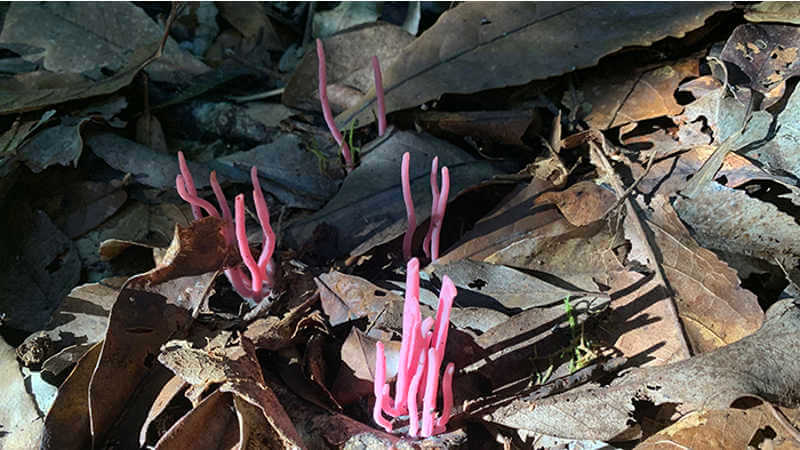
Clavaria zollingeri growing at Lamington National Park
Fungi for food and medicine
From a human perspective, the most important fungi are the yeasts. These are single celled fungi that are responsible for fermentation. If it wasn’t for a yeast fungus called Saccharomyces, we wouldn’t have bread and we wouldn’t have beer, wine, whisky and vodka.
Then of course there are a range of fungi that we eat such as the common button mushroom, oyster mushrooms, shitake, saffron milk caps, porcini, slippery jacks, and of course white and black truffles. Black truffles are the most expensive food in the world selling for around $6000-7000 per kg!
Soy sauce also depends on the fermentation of soybeans by a fungal mould, Aspergillus oryzae. Camembert cheese and blue cheeses such as Gorgonzola and Roquefort also depend on the growth of various species of Penicillium moulds to give them the unique taste and texture.
Speaking of the fungus Penicillium. Sound familiar? That’s because this is most important organism to produce the antibiotic Penicillin. The work by Howard Florey and Alexander Fleming that led to the discovery of penicillin had a massive impact on the survival of soldiers that were wounded in WW2 and it has saved the lives of countless people ever since.
The anti-rejection drug used in organ transplant, Cyclosporine, is also produced by a fungus. If you want to know more about fungi, plants and medicine, hit play and listen to our Branch Out podcast episode below.
When fungi are foe
Fungi can cause problems in two very important ways. Firstly, as disease causing agents of plants, animals and humans and secondly, by producing toxins that other creatures ingest. The impact of plant diseases by fungi has been known since ancient times with the Romans having two gods, Robigo and Robigus. It was necessary for the people of Rome to appease them to ensure their grain crops were not affected by rust disease. The battle to control diseases is still critical today with new strains evolving all the time. These fungi are highly adaptable and can evolve to attack resistant varieties of plants very quickly. We are currently seeing this with bananas all around the world being attacked by a new strain of Panama disease fungus and there is a frantic race to develop new resistant varieties to plant in place of the current variety.
It has been speculated that an additional 600 million people each year could be fed if fungal plant diseases were eliminated. It is also estimated that a billion people are affected by a fungal disease and that 1.5 million people each year will die from them.
Fungi also produces toxins that can affect people as contaminants in food or by people eating the wrong type of mushroom. It’s mushroom season and my advice is: don’t eat anything picked from the wild unless you are with an expert mycologist – there is a real risk of getting quite sick or even dying
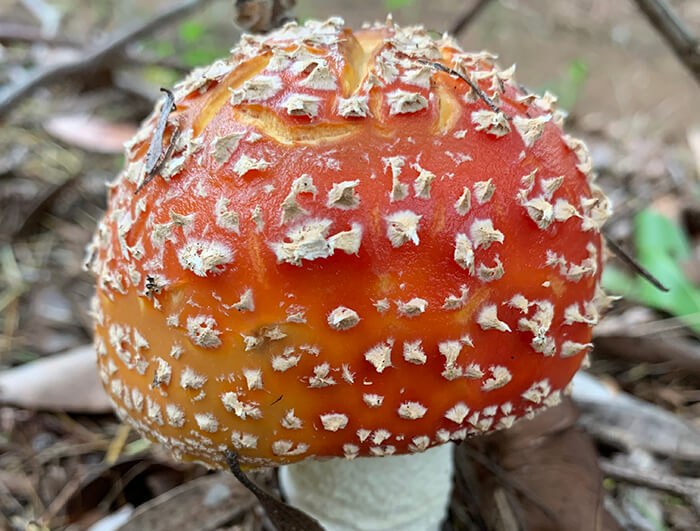
Poisonous Amanita muscaria growing at the Blue Mountains Botanic Garden, Mount Tomah
Fungi and fire
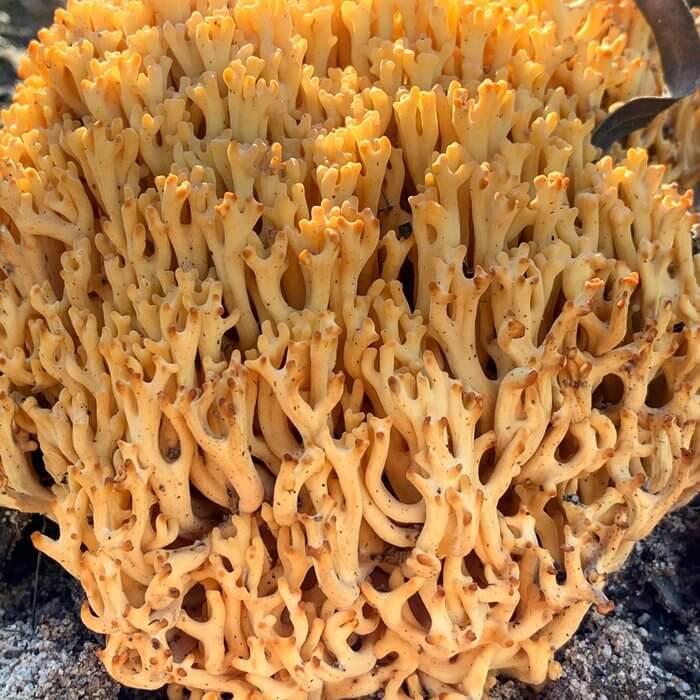
For organisms that seem relatively fragile, fungi survive well after bushfires. There are even species that are stimulated by fire and appear in abundance after one has occurred.
At the conservation woodlands at the Blue Mountains Botanic Garden Mount Tomah we have been recording the present of pyrophilous fungi after the fire last summer.
Species like Ramaria fungi pictured below have also fruited in abundance and provide an important food resource for many animals at a time when there is not much available.
Ecological role of fungi in nature
Most fungi are good guys and they are nature’s great recyclers and decomposers. If it wasn’t for the fungi the planet would be covered in masses of dead plant and animal matter. Fungi contain a complex array of enzymes that break down cellulose and lignin, the key chemicals in plants and timber. They subsequently turn these into simple chemicals that can be more easily absorbed by plant roots so that they can grow more effectively. Nearly all trees have fungi growing on them called mycorrhizae, which help them extract nutrients from the soil. Fungi are also essential for creating hollows in trees, which are critical habitats for birds, mammals, reptiles and all sorts of creatures. They also take advantage of every food resource and the photos below show an array of fungi growing on rabbit dung!
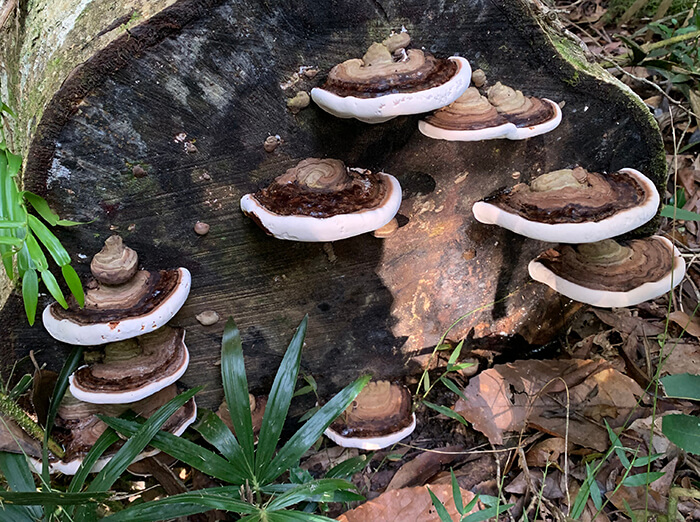
Ganoderma sp. growing at Lamington National Park
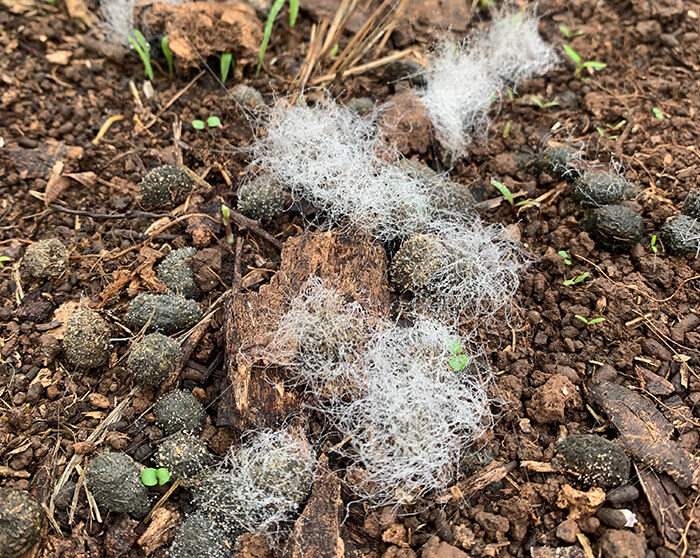
Unknown species of fungi growing on rabbit dung
Discover more
You can learn more about the impact of fire on plants and the fight against the plant disease impacting our bananas in the related stories below.
If you are a journalist and have a media enquiry about this story, please click here for contact details and more information.
Related stories
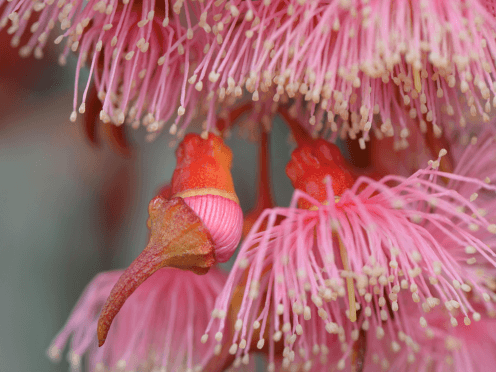
Eucalypts or gum trees are one of Australia’s most iconic plants. The scent of their oil alone evokes the bushland.

Eucalypts or gum trees are one of Australia’s most iconic plants. The scent of their oil alone evokes the bushland.

Immerse yourself in cool climate mountain maples, starry nights and magical mountain heights for a weekend roadtrip like no other.